What’s Up With NC Shrimp?
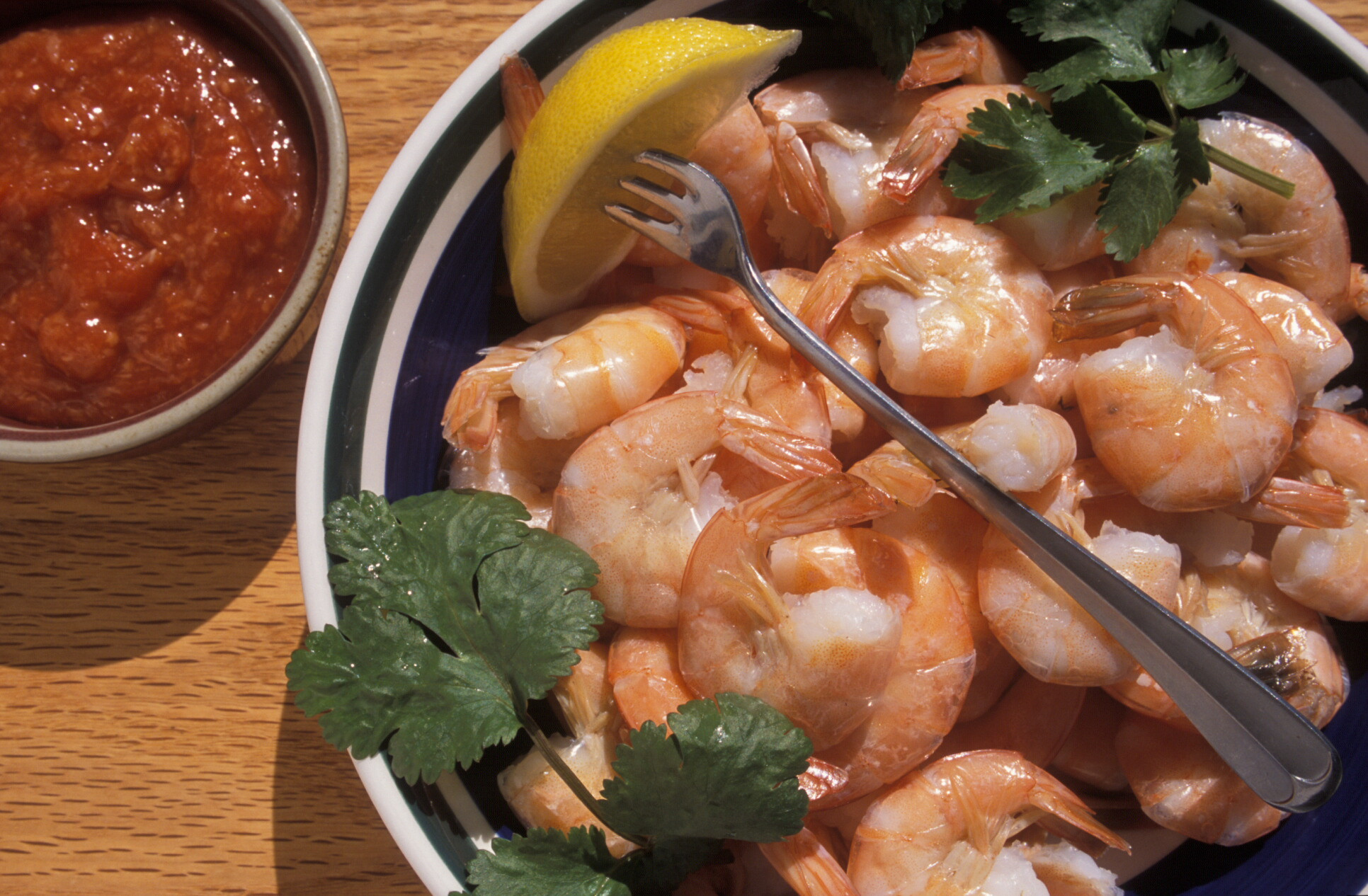
Are we catching more shrimp offshore during the winter and spring?
While it seems like a lifetime ago now, in early March I was invited to give a presentation at the annual NC Catch Summit in Raleigh to discuss North Carolina marine fisheries and seafood trends. I had received several requests for topics to discuss beforehand, one being to provide more information about anecdotal reports of an increase in N.C. shrimp during the winter and spring months the past few years.
Research Need
In North Carolina, wild-caught shrimp is one of the most important seafoods to the coastal economy, providing the livelihood for many commercial fishermen, a popular seafood for residents and tourists, and the bait-of-choice for many saltwater anglers.
Unlike most marine finfish, shrimp species are an annual crop, with fluctuations in their numbers closely linked to environmental drivers and biotic conditions. As a rule of thumb, historically 75% of N.C. shrimp are harvested in internal waters, with 25% coming from the Atlantic Ocean, predominantly off our southern coast.
The last few years, however, fishermen have reported catching more shrimp in the ocean during the winter and spring. Is this the case? And, if so, how would it compare to historic levels of shrimp harvest by waterbody and season?
What Did We Study?
NC Division of Marine Fisheries (NCDMF) provided shrimp landings data by month, year, and waterbody for 1994 through 2019. Comparing shrimp harvest by season during this period can show if and how the December through March periods are changing in relation to the rest of the year.
What Did We Find?
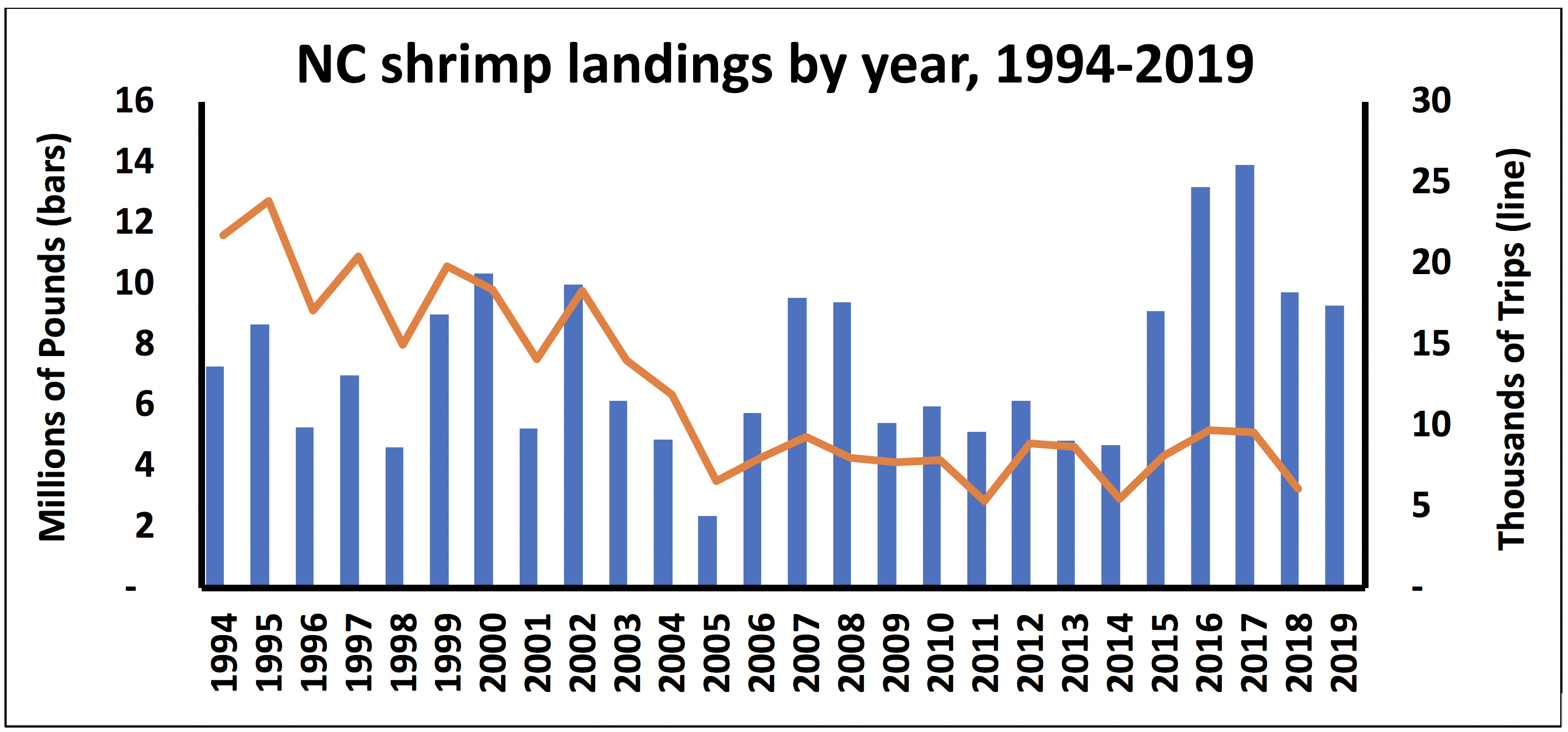
First, from a historical perspective, it is important to see that shrimp landings and the number of trips by year are highly variable. Over the last 26 years, annual shrimp landings have ranged from 2.3 million to 13.9 million pounds.
Next, during this same 26-year period, most of the N.C. shrimp harvest (76% of total landings) occurred in July through October.
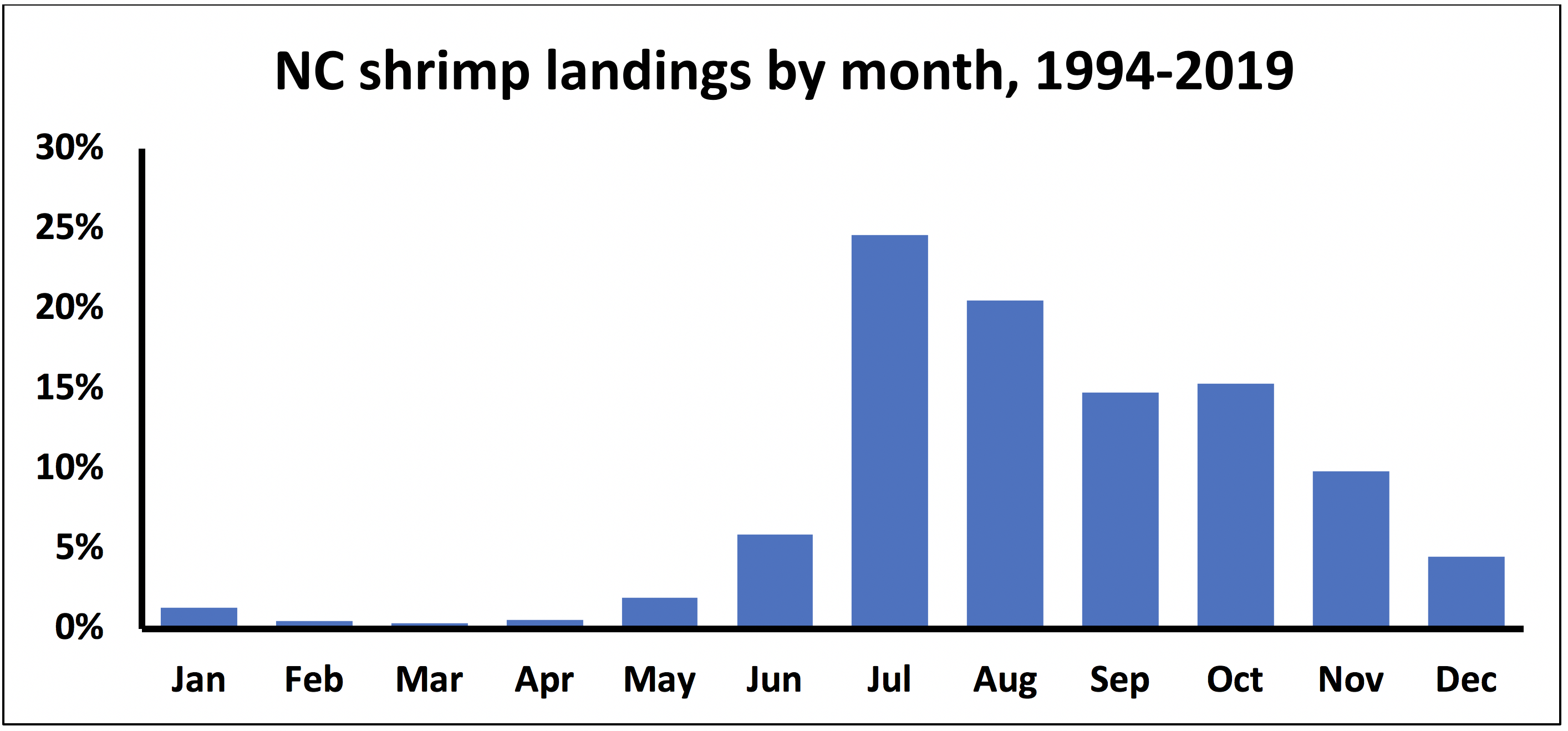
It gets more interesting when we look at shrimp landings by waterbody and season.
It is easy to see the relative stability of the ocean landings in comparison with the estuarine landings until 2015. At that point, the nearshore ocean landings begin to spike – followed by an increase in offshore ocean landings later in 2019. Estuarine landings during this time remain highly variable.
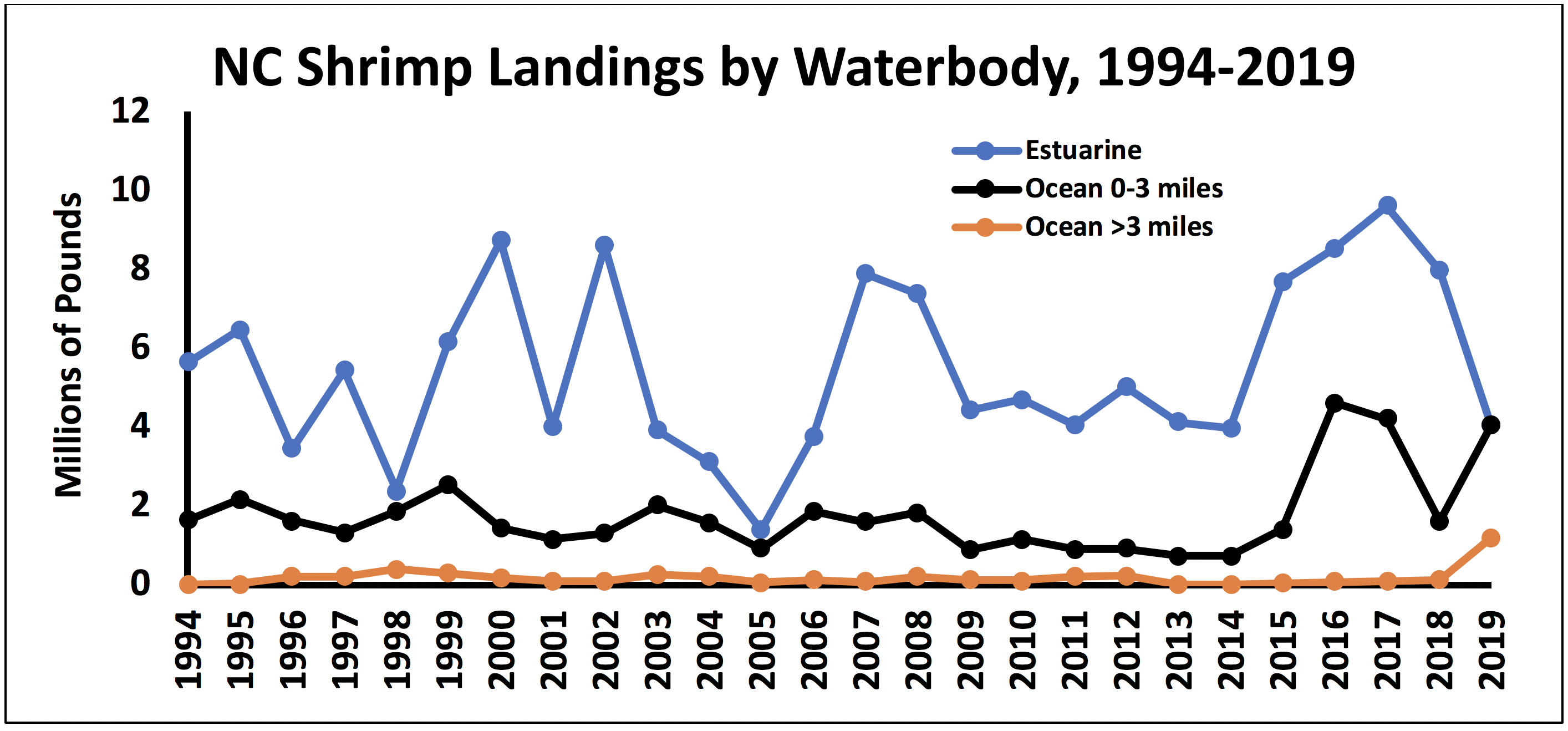
Finally, when we look at shrimp landings by season, we really start to see some changes.
Between the years 1994 and 2015, the percentage of annual shrimp harvest during December through March each year ranged from 0% to 8%. However, during the same months in the years 2015 to 2019, the percentage of annual shrimp harvest ranged from 10% to 37%.
Again, it’s important to reiterate that very few shrimping trips typically occur during these months, because shrimp are usually not abundant in our waters then.
By the way, the predominant species associated with the December to March time period is white shrimp.
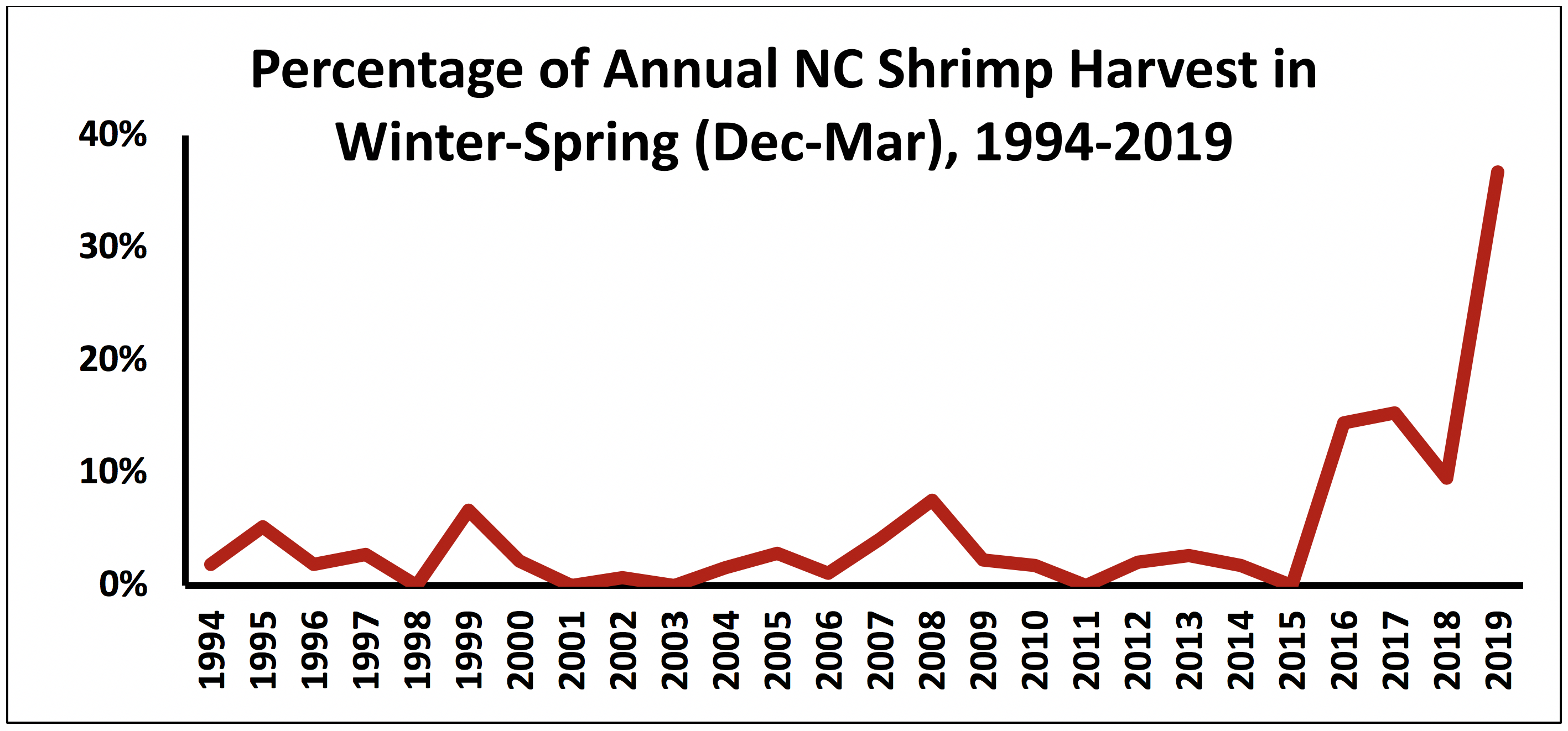
Anything Else?
Since 2017, one year after North Carolina’s first uptick in December to March Atlantic Ocean landings, Virginia has consistently seen an increasing abundance of white shrimp in its nearshore ocean waters. This is highly unusual. North Carolina historically has been the northernmost boundary on the East Coast for commercial quantities of Penaeid shrimp species, which don’t do well in cold water. An experimental shrimp trawl fishery has expanded each year in Virginia since 2017, where six permitted vessels collectively harvested 65,000 pounds of shrimp in 2019.
So What?
North Carolina’s shrimp fishery includes three Penaeid shrimp species: pink, brown and white. Most of the commercial harvest is brown and white shrimp. Pink – or spotted shrimp – are the least common to the state. Brown shrimp are normally harvested in the summer months, and white shrimp are harvested both in the spring and fall – and increasingly during the winter.
It’s too early to tell whether changes in shrimp harvest by waterbody and season will be a consistent, long-term trend or simply a multi-year anomaly. These changes can at least partially be attributed to the global rise in sea surface temperatures, which is causing similar shifts for other marine finfish. Regardless, it has extended the shrimp season for N.C. fishermen and consumers requesting N.C. shrimp, a trend certainly worth watching.
Reading
The NC Division of Marine Fisheries provided shrimp harvest data. For additional NC shrimp information and data, visit: http://portal.ncdenr.org/web/mf/fmps-under-development.
For climate monitoring data, including historical sea temperatures visit: https://www.ncdc.noaa.gov/cag/global/time-series.
Summary compiled by Scott Baker
Lead photo by Bill Russ/VisitNC.com
The text from Hook, Line & Science is available to reprint and republish at no cost with this attribution: Hook, Line & Science, courtesy of Scott Baker and Sara Mirabilio, North Carolina Sea Grant. HookLineScience.com



